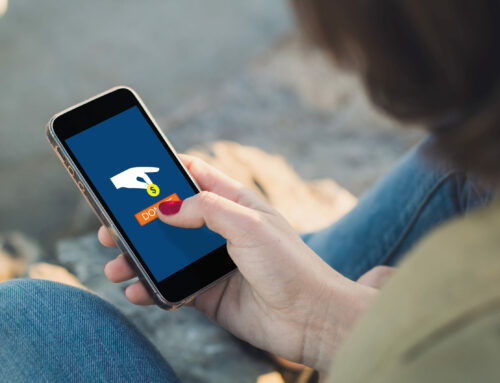The right fundraising tools can change your life.
Let me start by asking an odd question: Have you ever sat on a 2-legged stool?
Didn’t think so.
I’m not sure there is such a thing. It would be unstable.
It would be like being on a bicycle and you’d have to balance yourself.
Wouldn’t really be much of a seat, would it?
A stool with 3 legs would be much more stable.
Four legs would be even better. There’s a reason most chairs have 4 legs – they’re safe to sit on and won’t turn over, causing you to fall.
It’s the same way with fundraising: the more revenue streams you have, the more stable your fundraising income. And stable, sustainable funding is how you’ll fully fund your budget.
So, let’s see how balanced your funding is right now.
Balanced fundraising
Diverse revenue streams are a wonderful thing.

In practical terms, it means that you’ve got money coming in from grants, events, and individuals, maybe in the form of direct appeals, monthly giving, and major gifts.
Lots of money coming from a variety of sources is good. Relying heavily on one or two for all your income is very dangerous. What happens if one goes away?
I’ve had 2 clients in the last 10 years who experienced that, and it’s not fun.
When you aren’t prepared to do donor-based fundraising and you lose a grant that generates 75% or more of your income, it can leave you in a panic, desperately searching for funds (that’s usually when they show up at my door).
And hey, I’m good, but I’m not magic! It takes time to build a donor base and identify people with the capacity to give big gifts. The bad news is that once you’re in panic mode, you’ll have to work really hard to get out of it.
So, let’s avoid all that and make sure you have a nice, diverse mix of funding creating stability for your nonprofit. Sounds better, right?
Here are 4 tools to help you balance your fundraising to make sure your funding is diverse and you have the right mix of strategies.
4 fundraising tools to help you diversify your revenue
1. Transactional vs transformational
Anytime someone gets something in exchange for their ‘donation,’ it’s a transaction. Transactional giving results in people who expect stuff for their money, which is not a good situation. These people are not really donors – they’re customers. Compare that to people who give because they love your cause and want to help make a difference. These folks are giving transformationally. In other words, they’re in it for the transformation they’re helping bring about.
If all your fundraising is transactional, you’ll find yourself on a treadmill, constantly looking for someone to purchase something. After a while, people will get really tired of it (and heck, you’ll get tired of it, too!). Instead, make sure you have a good mix between transactional and transformational fundraising, and that the majority of your fundraising activities are transformational. It’s much healthier and more stable for the long run.
An easy way to find out where you are right now is to make a 2-column table like the one below and list out every fundraising activity you do, putting them in the column where they go. If your transactional column is longer than your transformational column, you’ve got some changes to make.
| Transactional | Transformational |
|---|---|
| Selling candy bars, candles, T-shirts, calendars, etc. Chili cookoff, bake sale, car wash, etc. Golf tournaments, walks, runs Live or silent auctions Raffles |
Direct appeals Monthly giving Sponsor a child/animal Major gifts Matching gifts Planned giving |
2. The 3:1 ratio
How often are you asking for money? If all your donors and prospects see from you are Asks, you’ve got a problem. They’re going to feel like they’re being pecked to death by a chicken and they’ll quickly leave. Think about it: have you ever known someone that every time you heard from them, they were asking you for something? How did that make you feel? It’s exhausting and very soon you stop answering the phone when you see their number
To prevent Asking fatigue, make sure you have plenty of non-Asks going out to donors. These are things like good newsletters (with no Ask), written or video updates, holiday cards, and so on. We call them warm touches because their purpose is to make the donor feel good about supporting your nonprofit.
You should send out at least 3 warm touches between each Ask.
If you do, your donor won’t feel like all you do is show up with your hand out wanting money.
It’s a fantastic way to balance your fundraising so that your donor doesn’t get burnt out.
3. The 25% Rule
Remember what I said earlier about not putting all your eggs in one basket? Here’s the tool that will help you do that.
It’s called the 25% Rule and it goes like this: No single donor, grant, or other revenue stream should make up more than 25% of your total income.
Want to check yours? Create a pie chart similar to the one above to represent your funding streams. Once Excel calculates the percentages for you, you’ll be able to easily see if you have a problem.
Also look at your top 10 donors to see if any of them make up too much of your revenue (it can happen). If you have a single donor giving more than about 10%, you need to increase your other revenue streams to decrease your dependence on the one donor.
4. Retention and Acquisition
According to the latest studies, donor retention across the industry is at 46%. That means if you start the year with 100 donors, you’ll end the year with 46. Folks, this is BAD! It means you can work really hard and still be going backward if you’re not working hard on the RIGHT things
To make sure you have healthy fundraising, you need a strategy for renewing donors. You need a plan for communicating with them and making them feel good about giving to you. That means your newsletters can’t be hit or miss – they have to be regular and heart-warming. And you need to be asking 3-4 times during the year, giving donors the chance to give to something that they care about.
In addition to retention, you also need a strategy for acquiring new donors. If you’re going to lose 54% of your donors, you must be bringing it that many new ones just to break even. Otherwise your donor base will shrink and shrink until there’s nothing left. Calculate the number of new donors you need, then put a plan together to find them.
When you’re purposeful about renewing donors and consistently work to add new ones, you’ll have a healthy, happy donor base, which creates sustainable funding.
If you’re serious about fully funding your budget so you don’t have to worry about money, you need diverse funding and a happy group of donors. Use these 4 fundraising tools to help you create balanced fundraising for your nonprofit.








[…] or build any lasting relationships with people who want to support your cause. It’s better to balance your fundraisING with the right kinds of strategies. Here's the difference between holding fundraisERS and doing […]